It’s rotten to have to give a bad update. When you take time to dig the soil, amend it, select the plants and plunk them in the ground, you hope it all works out and that you get to eventually taste something yummy. It’s bad news for the garlic we so carefully planted way back in the fall and the young onions, too.
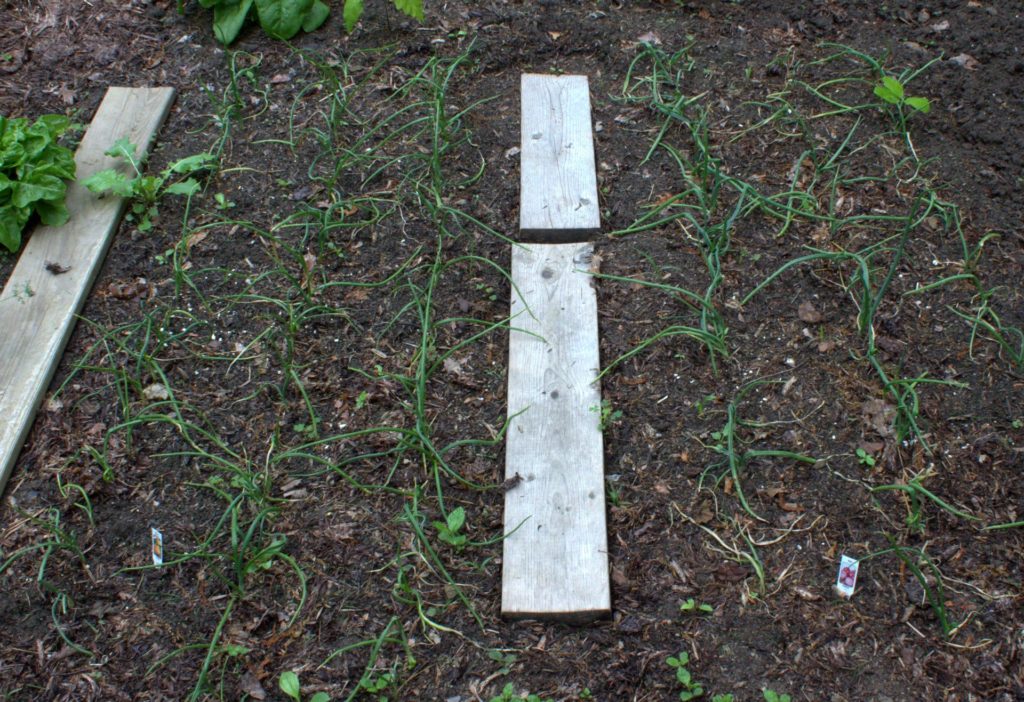
Shouldn’t these young onions be standing a little taller? Their leaves are looking deformed. (Photo taken May 23, 2017. Click on any photo to see a larger image.)
Mother nature had something else in mind when on the winds came a little yellow-headed fly. That critter laid her eggs on the onions, garlic and leeks. When they hatched the “worms” ate their way down to near the bulbs. Being full enough of onion or garlic leaves they transformed themselves into pupae and that’s what we found. Little brown grains of rice – actually they’re smaller than grains of rice but easy to see against the white Allium fruits.
Harvested garlic and leeks (elephant garlic) show the presence of Allium leafminer pupae. (Harvest photos taken June 14, 2017.)

Deformed leaves of garlic weren’t obvious in their early growth.
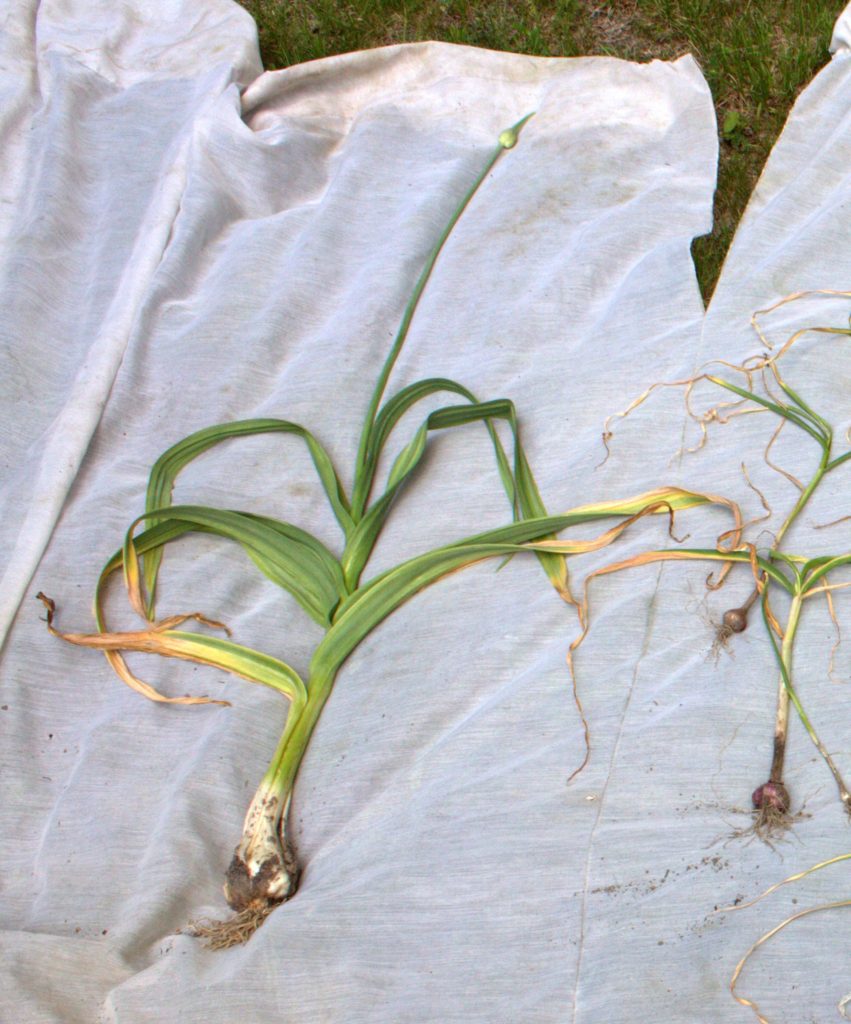
The leaves of elephant garlic didn’t appear to be deformed, but these “leeks” were still infected.
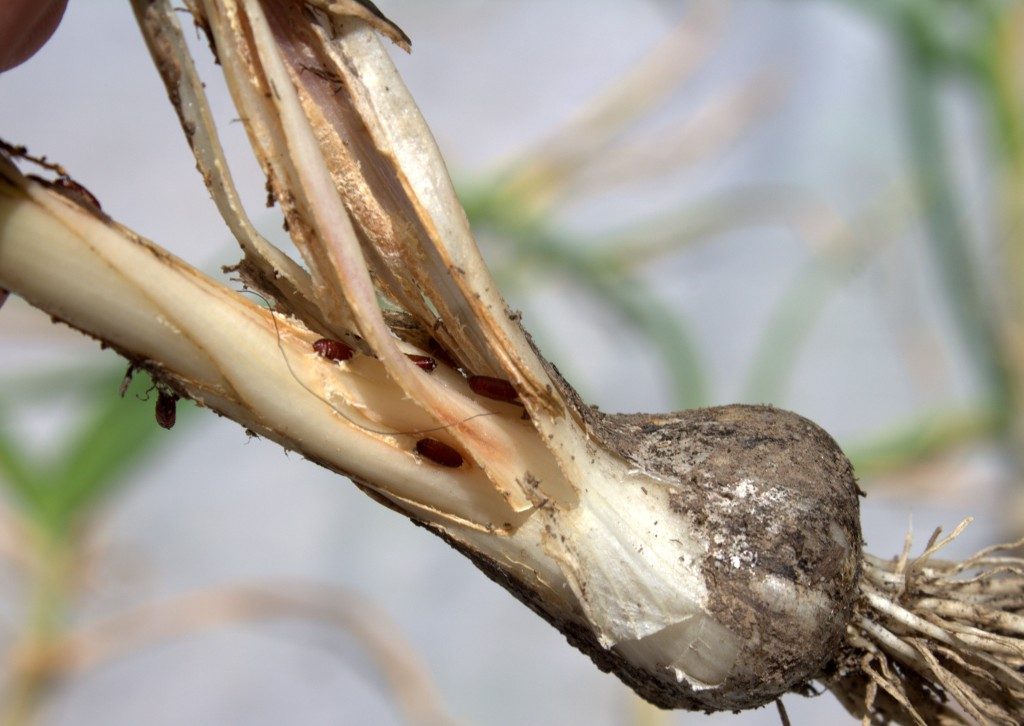
Peeling the leaves back revealed several leafminer pupae on most every garlic bulb.
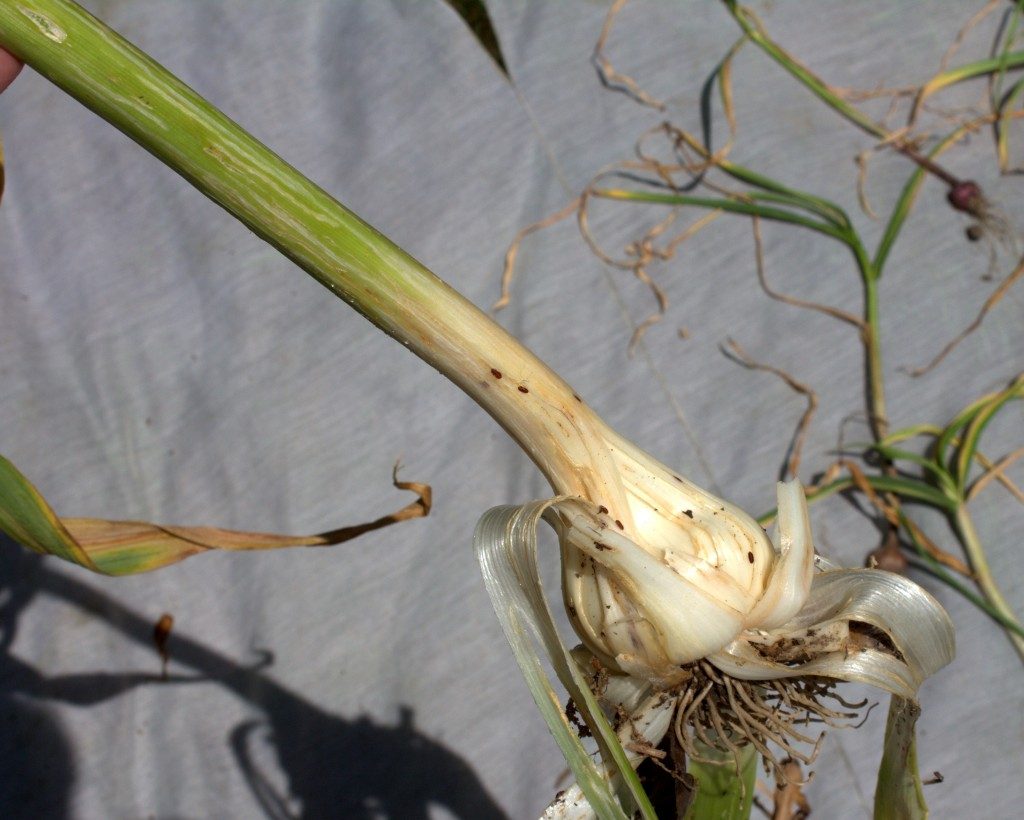
The larger elephant garlic plant highlights how the leafminers tunnel down the leaves to reach the bulbs where they pupate.
I did take a few garlic bulbs for the kitchen knowing it would all be cooked before being eaten. Although ingesting a pupa probably wouldn’t harm you, the thought of it just creeped me out so that garlic will be carefully inspected before going into the hot oil!
At first I thought the onions were hit by that first heat wave of the year which happened early in May. Their vertical leaves weren’t growing so nice and tall.
I wondered what the heck was going on with the spring onions as two varieties were affected. The green tails developed curly, deformed shapes, not the typical straight up leaves that one expects would taste nice on a salad or quesadilla or cheese bread or potatoes. You get the idea!
I did take notice that a fruit stand I visited to pick up some fresh asparagus, which usually would offer great big spring onions, didn’t have any for sale. Curious.
Then, when I visited a local greenhouse and asked them if their onions survived those early Spring days with temperatures in the 90s, the man knew what I was going to say. He told me that everyone was hit by a “worm” that destroyed the garden onions. He meant the maggot stage of the Allium Leafminer, Phytomyza gymnostoma.
First, a couple of years ago this onion- and garlic-eating maggot hit the Lancaster, PA area. It didn’t take long for the pest to spread to the rest of South-Central PA.
Another fruit stand just west of Millerstown, PA had a sign posted that indicated they were hit by the same pest and that they couldn’t offer any of their damaged onions for sale. Bummer.
We eat a lot of onions, both cooked and fresh, so I’ll be looking for organic onions or garlic as we don’t trust any pesticide residues on our food. Since the middle of June I did find some locally popular “Candy onions” offered for sale at $1 a piece at roadside stands. They’re not great keepers but maybe I should pick up a few now for those batches of salsa we like to make every year.
We can only hope that this pest won’t make it to Vidalia, Georgia. Cross your fingers!
Most of the onions were taken out of the garden to make way for other veggies or herbs.
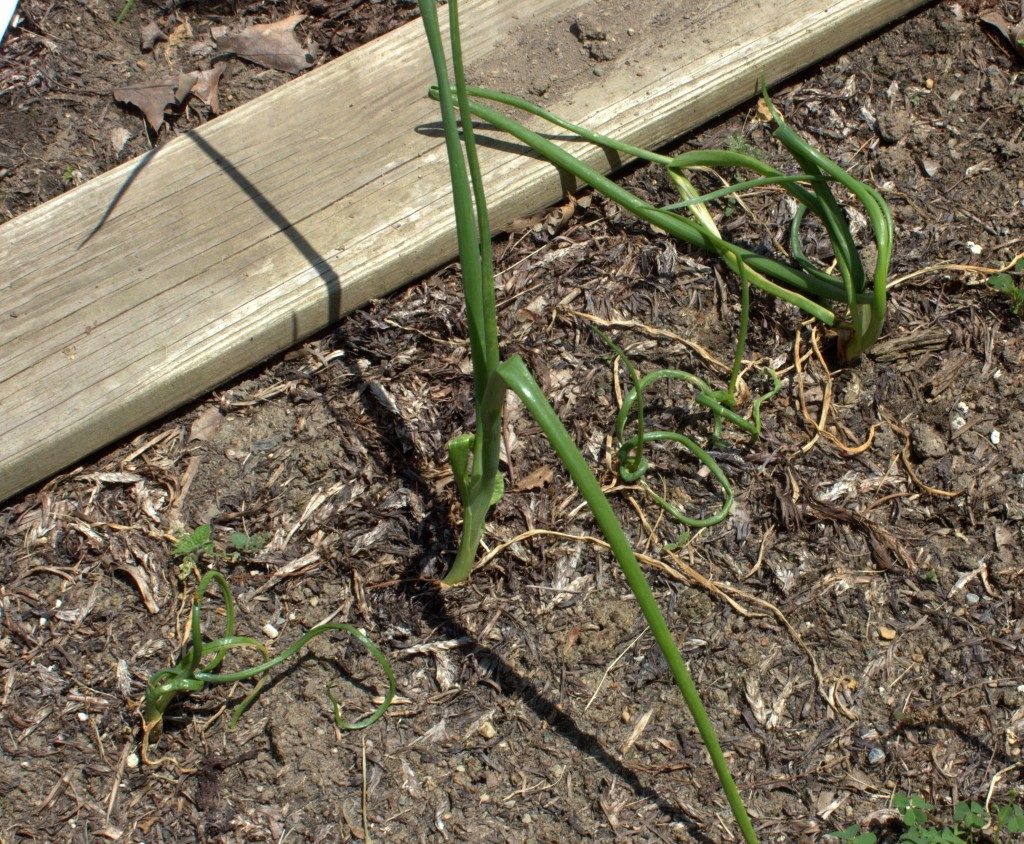
Above, a single onion shows a couple of tall onion leaves with deformed onion plants not growing very well on either side of it. (Photo taken June 14, 2017.)
A few plants grew out some normal-looking leaves that will be harvested for the kitchen, but there’s no hope for keeping the onions or garlic over the winter.
However, the Allium leafminer pupae that are present will hatch out into adult flies in September/October ready to infect any remaining onions or garlic.
The only hope of growing onions or garlic would be to do several things. First, make or buy yellow sticky cards to capture the adults hopefully before they lay eggs. Second, plant onions and garlic in late Spring next year in a different area. Third, cover these crops carefully to prevent access to them by the flies that will undoubtedly be buzzing around.
Alternatively, and this is the tact we’ll use, is to not grow any Alliums for the next couple of years. If the food source isn’t present for the young critters to eat, the adults won’t lay their eggs here. It may take a couple of years to break the cycle if you don’t get all the plants removed from the garden or if you have neighbors close by who also like to grow onions and garlic.
Now I’m wondering how our native chives will handle having this new pest around. Certainly, the presence of chives that naturally grow on our mountain top might be a way for the onion leafminer to remain in our area for a lot longer than we’d like.
If you are so unfortunate as to spot the pupa of leafminers, contact your local agriculture extension agent as soon as possible.